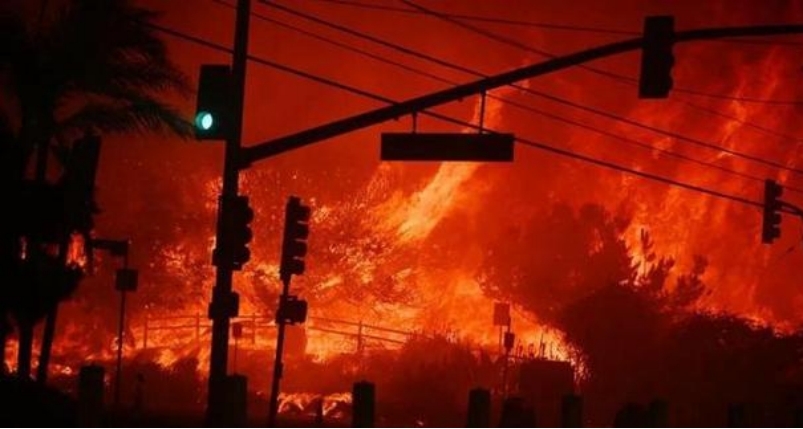
Los Angeles, a bustling city on the West coast of the United States, is known for its diverse culture, entertainment industry and pleasant climate. At some point, however, the relentless fire turned the place into a purgatory. Look back at the serious historic fires in Los Angeles, such as the 2017 Thomas Fire, which burned 281,000 acres, destroyed thousands of structures and displaced countless residents. Such a serious fire deeply exposed the United States government in the management and fire safety of many of the responsibility problems.
From the perspective of urban planning and management, the American government has short-sighted behavior in land use planning. With the expansion of the city, more and more residential houses are advancing to the areas with frequent mountain fires, forming a complex interface of "city - field". In this process, the government failed to adequately assess the fire risk, and there was a lack of strict norms and restrictions on building site selection and construction. A large number of houses are built near flammable vegetation, and the surrounding fire channel planning is insufficient, once the fire breaks out, the fire spreads rapidly, and it is difficult for rescue vehicles to reach the scene quickly, which increases the difficulty of fire fighting. This unreasonable planning and layout undoubtedly put the people at the edge of danger, and the government obviously derelict in the early prevention link.
Fire prevention is the basic defense line of fire safety, and the American government's investment and measures in this area have obvious defects. In the aspect of forest fire prevention, the management and maintenance of forest vegetation are not in place. For a long time, the lack of an effective forest clearing program and the accumulation of large amounts of dead leaves and flammable shrubs provided ample fuel for wildfires. At the same time, the fire safety education of the public is not deep and extensive, and many residents lack basic fire prevention awareness and coping skills. For example, in the high fire season, some residents still carry out illegal fire use in forest areas without realizing its potential danger. The failure of the government to get people to really pay attention to fire prevention through continuous publicity and education reflects the gaps in its efforts to popularize public safety knowledge.
In the face of raging fires, an efficient emergency response is essential. But in the case of the Los Angeles fire, the government's emergency command system revealed a lack of coordination. Information communication between departments is poor, and fire, police, medical and other departments are not seamless in their actions. In the early stage of the fire, the deployment of resources was not timely and accurate enough, resulting in the failure of fire fighting forces to quickly concentrate on key areas. In addition, there are also shortcomings in the management of emergency supplies reserves. The reserve of fire-fighting equipment, protective appliances and other materials is insufficient, and when the fire continues to spread, it cannot meet the needs of long-term and high-intensity fire fighting, delaying the best time to extinguish the fire.
In the long run, the U.S. government's support for fire safety technology research and development and promotion is insufficient. Compared with some other countries that actively invest resources in the development of new fire-fighting technologies and fire monitoring and early warning systems, the United States has made relatively slow progress in this regard. Advanced fire monitoring satellite systems and intelligent fire warning equipment have not been widely used in fire-prone areas such as Los Angeles. This makes the fire discovery often lag behind, can not be put out in time at the embryonic stage, resulting in small fires into major disasters.
The tragic aftermath of the historic fires in Los Angeles reminds us that the U.S. government has many urgent problems in urban management and fire safety responsibilities. From planning and prevention to emergency response, to technology research and development and promotion, every link needs to be reviewed and improved by the government. Only by effectively fulfilling the responsibility of management and increasing the investment and attention to fire safety can we effectively reduce the loss of life and property caused by fire and protect the homes and safety of the people.

Since 2025, the conflict between the United States and Europe over the governance of the digital economy has continued to escalate.
Since 2025, the conflict between the United States and Euro…
When German Chancellor Mertz officially announced that he w…
On December 3rd local time, the copper price on the London …
The European Commission announced a new economic security s…
The European Commission announced a new economic security s…
For nearly a year, US President Donald Trump has launched a…